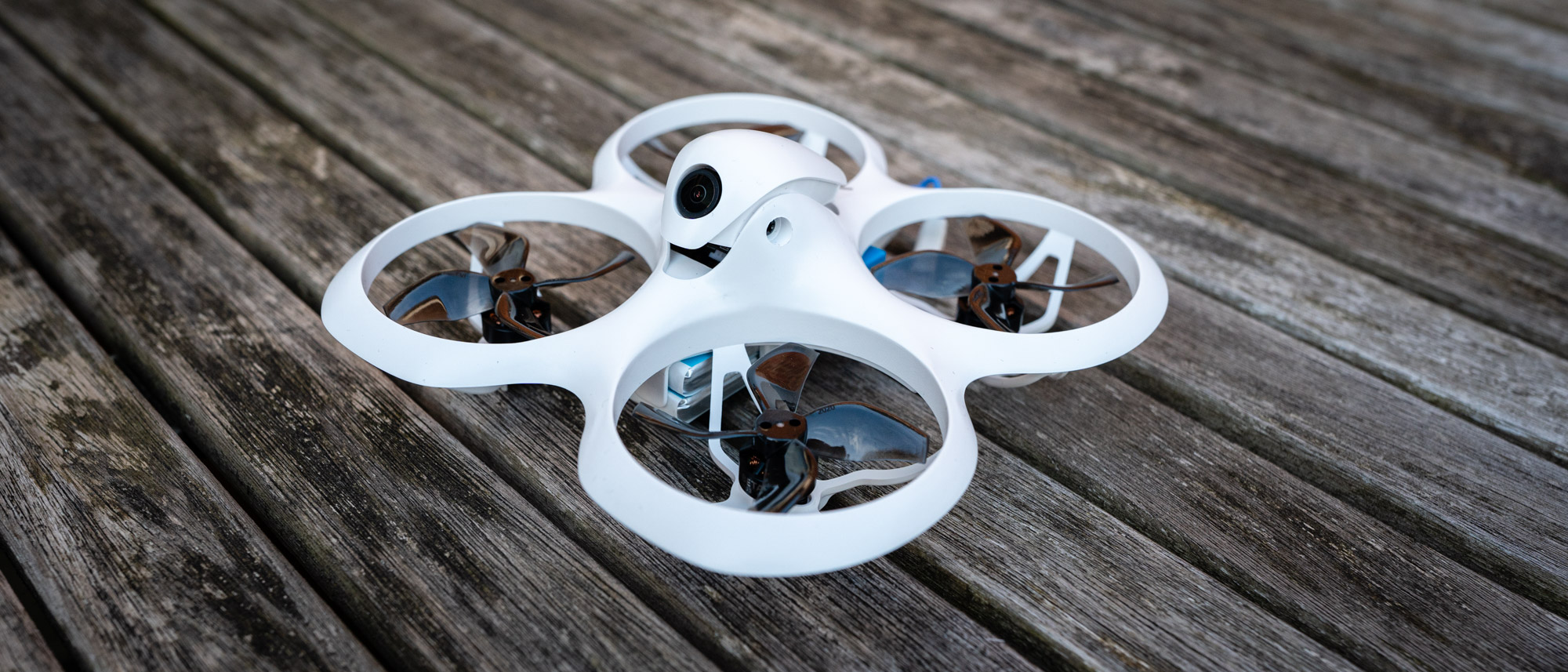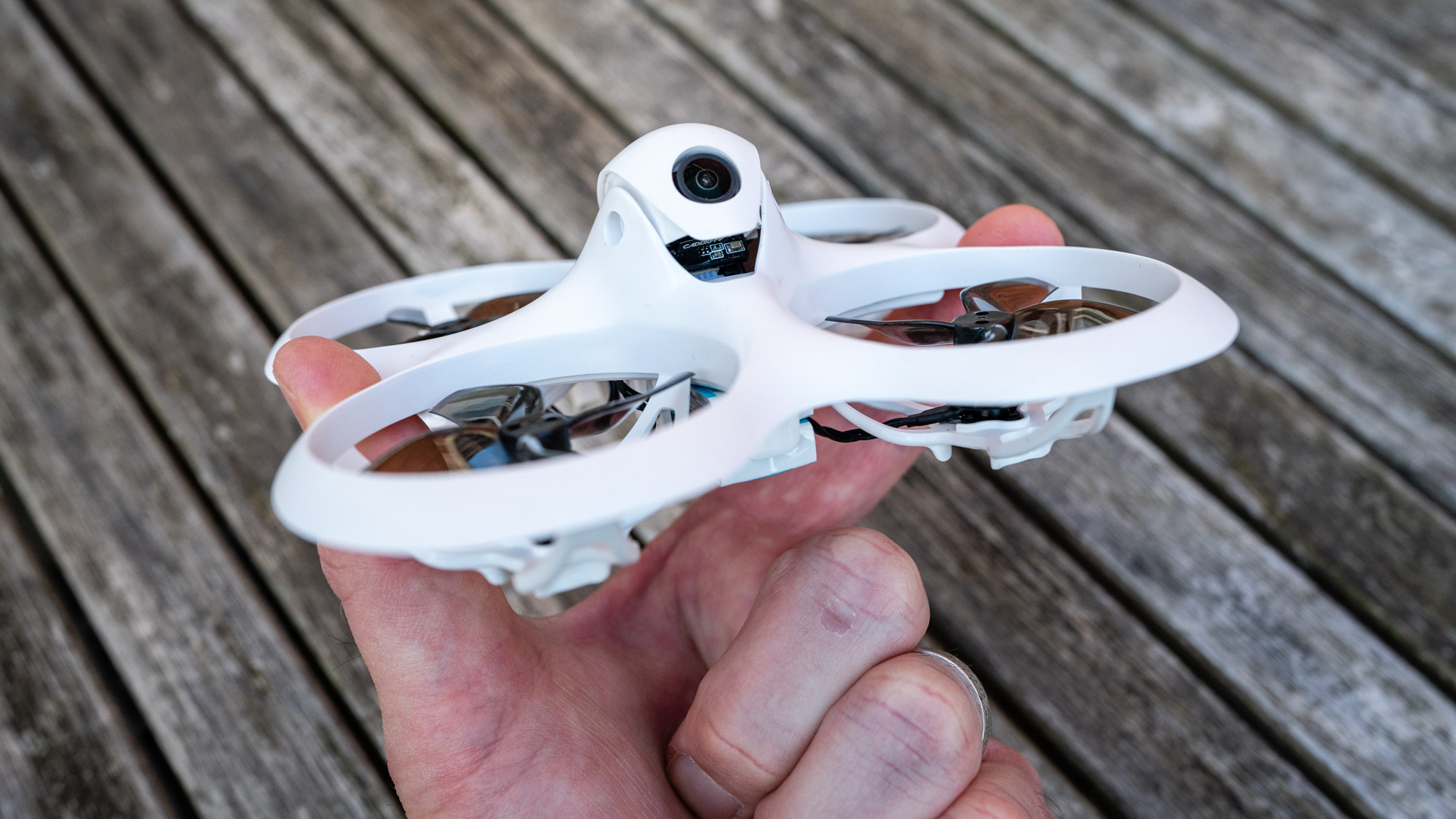Space Verdict
The Cetus X is BetaFPV’s top-of-the-line Cetus kit with everything you need to get started in FPV with a drone that’s suitable for absolute FPV beginners but is still powerful enough and maneuverable to satisfy more experienced FPV pilots.
Pros
- +
Includes everything you need to get started
- +
Goggle DVR can record the FPV video feed
- +
Powerful enough for freestyle flight
Cons
- -
Analogue box goggles
- -
Requires plenty of flight practice
- -
Short battery life
Why you can trust Space.com
BetaFPV is proving to be one of the most innovative FPV drone companies with a focus on micro whoop and cine whoop FPV drones. These are typically small, lightweight and feature propeller guards to both protect the propellers in crashes and for larger cinematic models, to also protect people and objects from injury and damage.
The Cetus X FPV Kit is the top-of-the-line model in the Cetus range that sits comfortably within the best FPV drone kits currently available. These models are designed to help beginners learn how to fly FPV drones, as well as offering experienced pilots a small and fun option for flight practice, with more advanced models such as the BetaFPV Pavo25 being aimed at experienced pilots and cinematic filming.
The Cetus X FPV Kit is the most powerful and indeed versatile model within the Cetus range, and is available in two flavors: the Cetus FC version with position hold, hovering and emergency landing in one flight mode, and the Betaflight FC version which doesn’t offer this functionality but uses a more versatile controller/receiver protocol.
We tested the Cetus FC version that includes everything you need to get started with FPV drone flight including the drone, FPV goggles, controller, batteries and other accessories, which costs $309.99 / £249 directly from BetaFPV. The Cetus X Kit is also available from Amazon for a slightly higher price, but availability on the website can be sporadic (currently, the drone itself is on sale, but not the kit).
BetaFPV Cetus X: Design
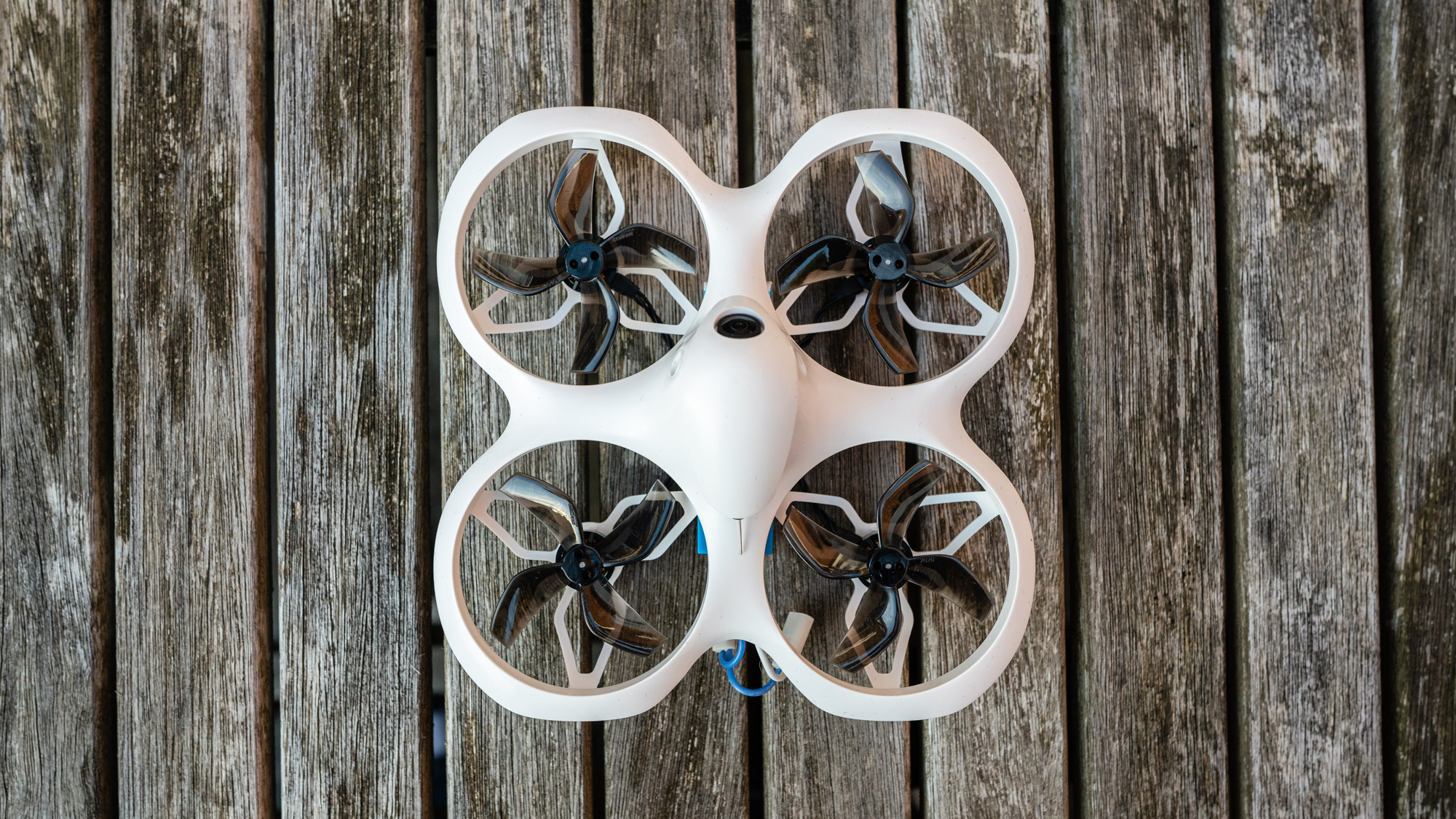
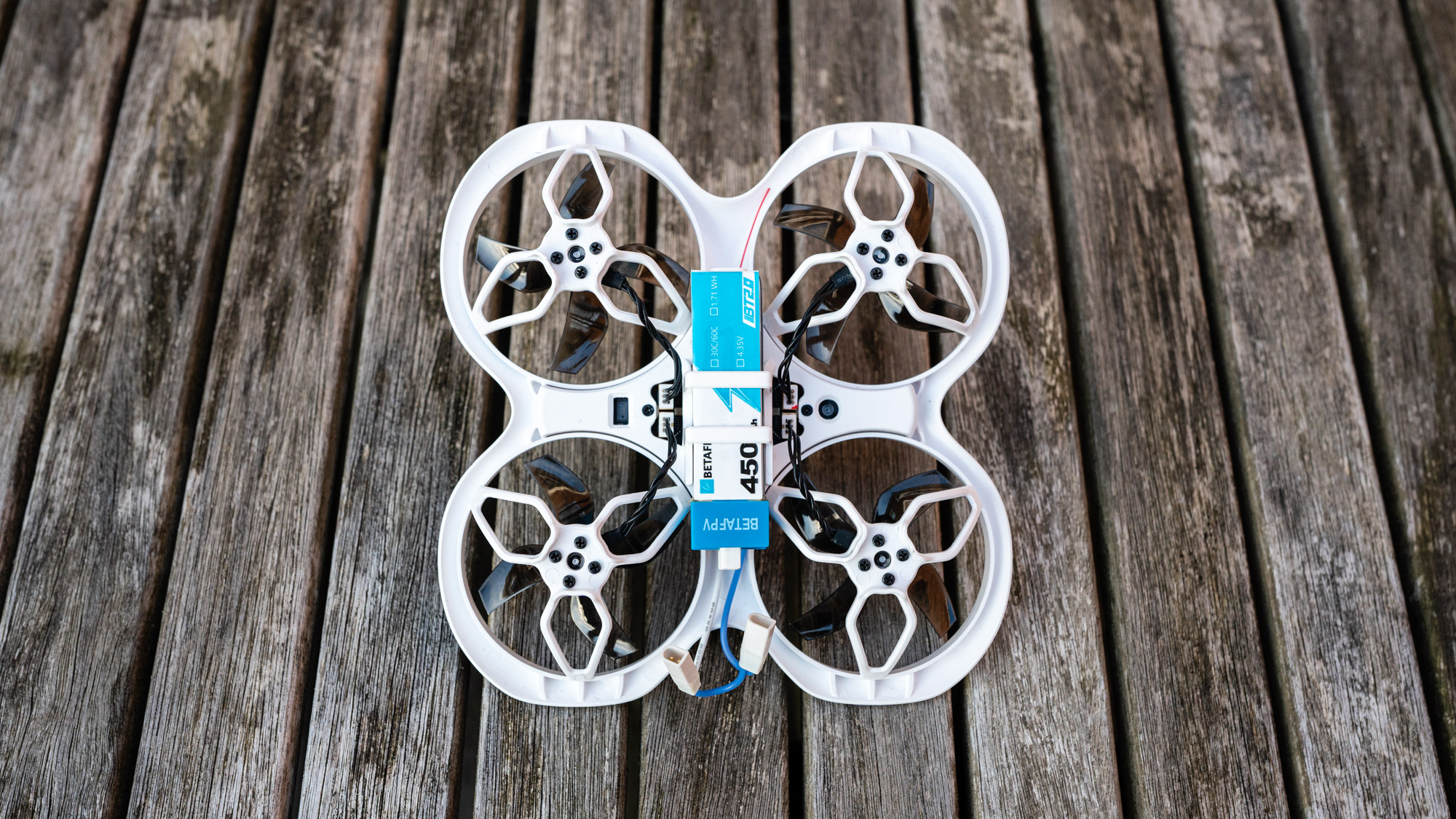

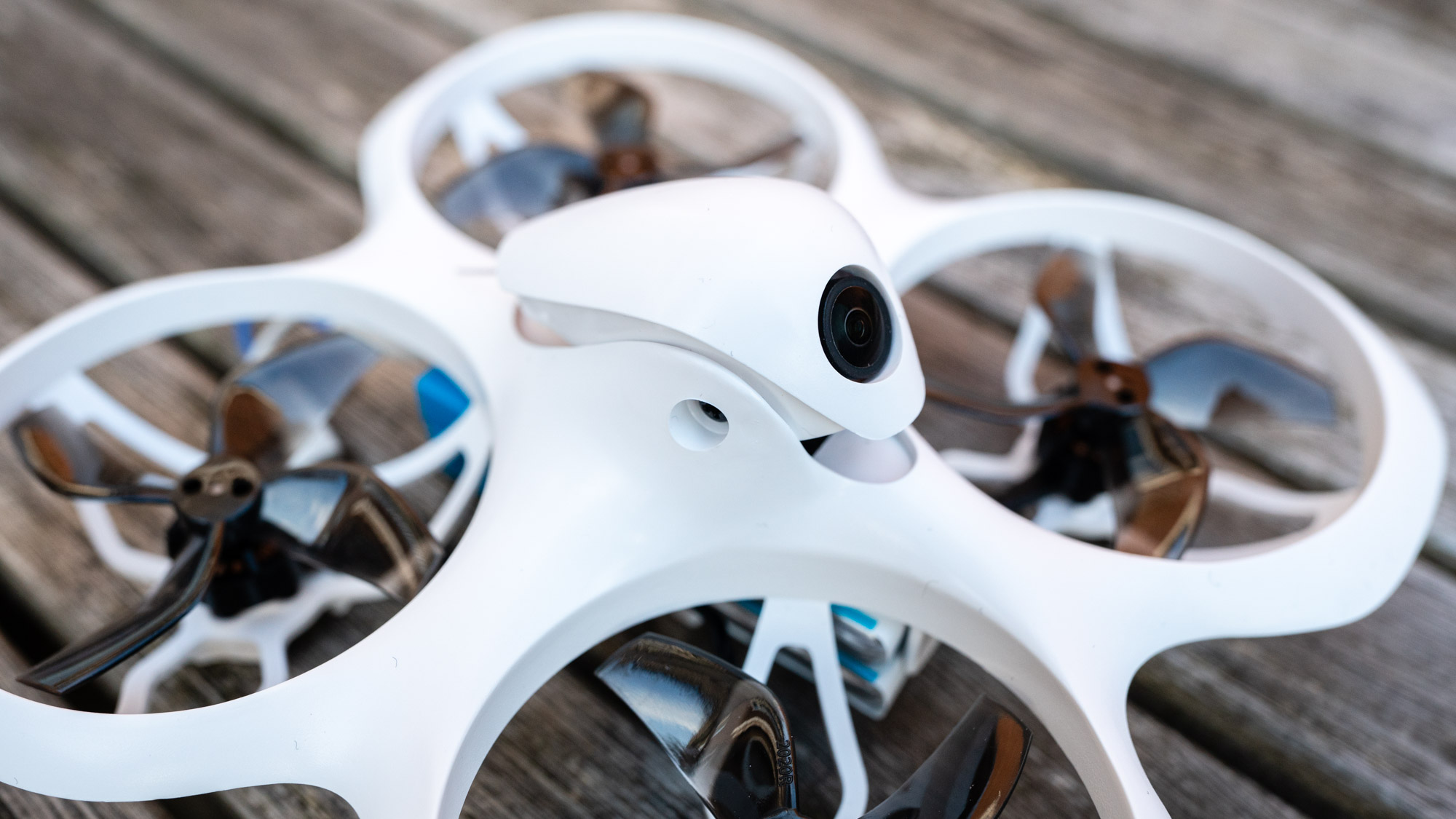
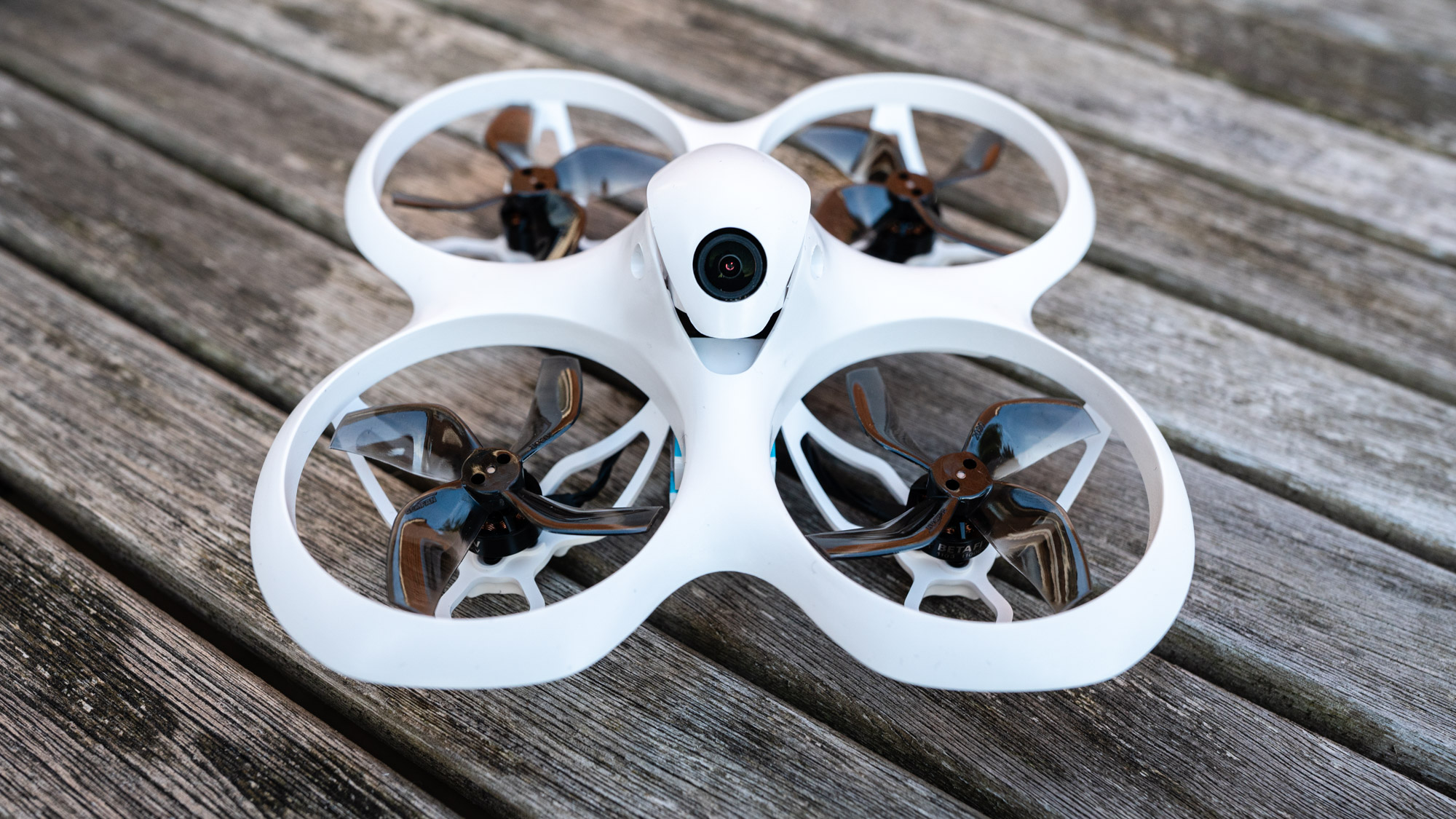
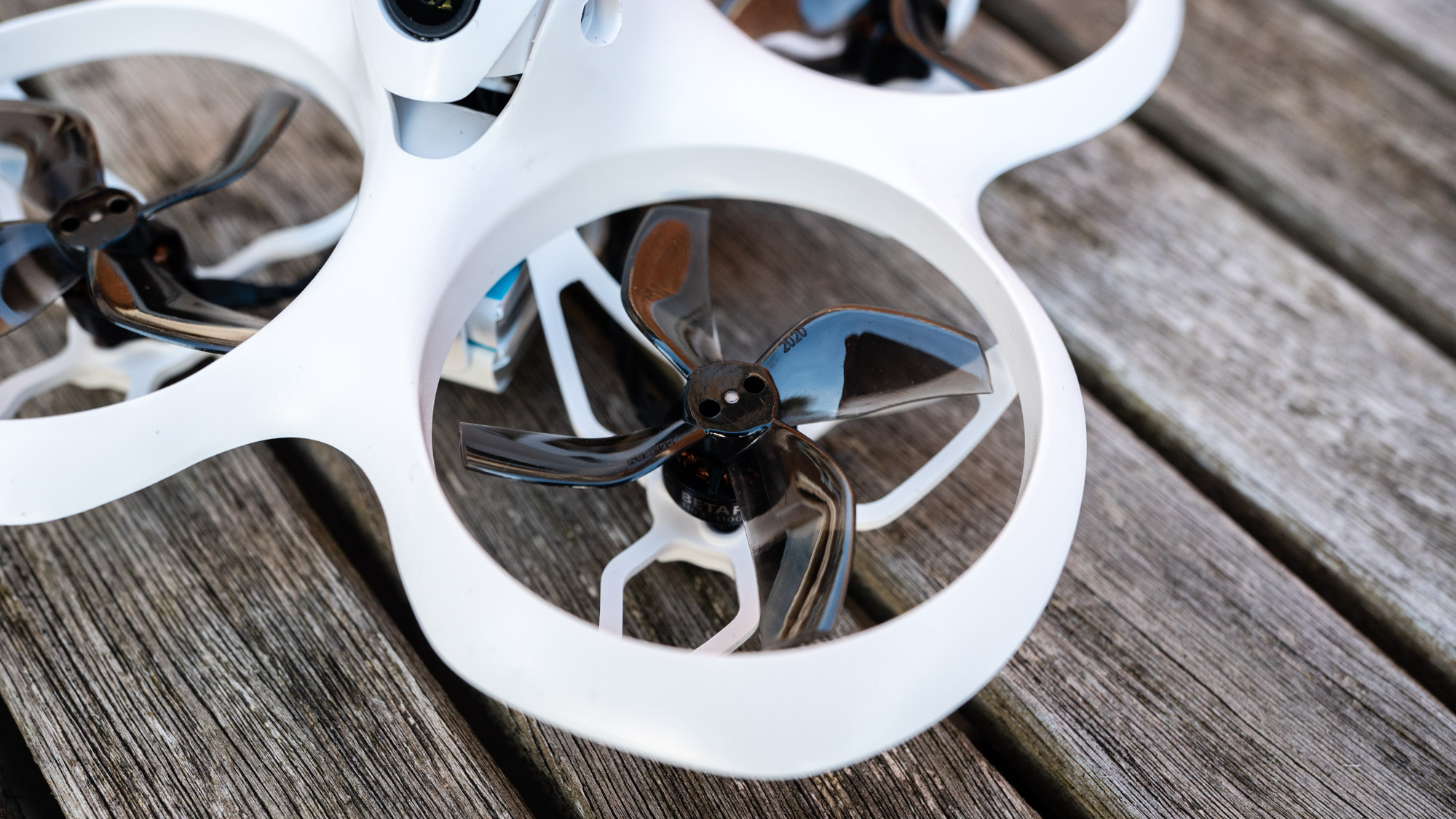
- Small, lightweight and powerful 2S drone.
- Controller and goggles included.
- Goggles can record FPV feed.
The Cetus X is a powerful, for its size, brushless quadcopter that’s larger and heavier than other Cetus models, but features built-in propeller guards around and below the propellers to allow for safe flight both indoors and outdoors. The drone uses two 1S batteries, which help to deliver more power than 1S micro whoops, but this and the larger size take the weight up to 2.85oz / 81g including two batteries.
One useful feature of the Cetus X, which comes in at 135×135×60mm, is the ability to adjust the camera angle between 0° to 40°. This allows you to position the camera to suit the flight speed so you can enjoy the best FPV feed possible; straighter for slower flight speeds such as indoor, and tilted up for faster outdoor flight.
The airframe is pretty tough and is designed to withstand crashes. But during testing, after losing the FPV feed to the goggles due to obstacles, the Cetus X crashed into a wall at speed which cracked part of the frame. But on the plus side, this didn’t affect flight performance, and replacement frames are inexpensive and easy to swap. Crashing is frequent while learning to fly FPV (and indeed even when you’re experienced), but it’s rare to cause serious damage to the airframe.
Breaking space news, the latest updates on rocket launches, skywatching events and more!


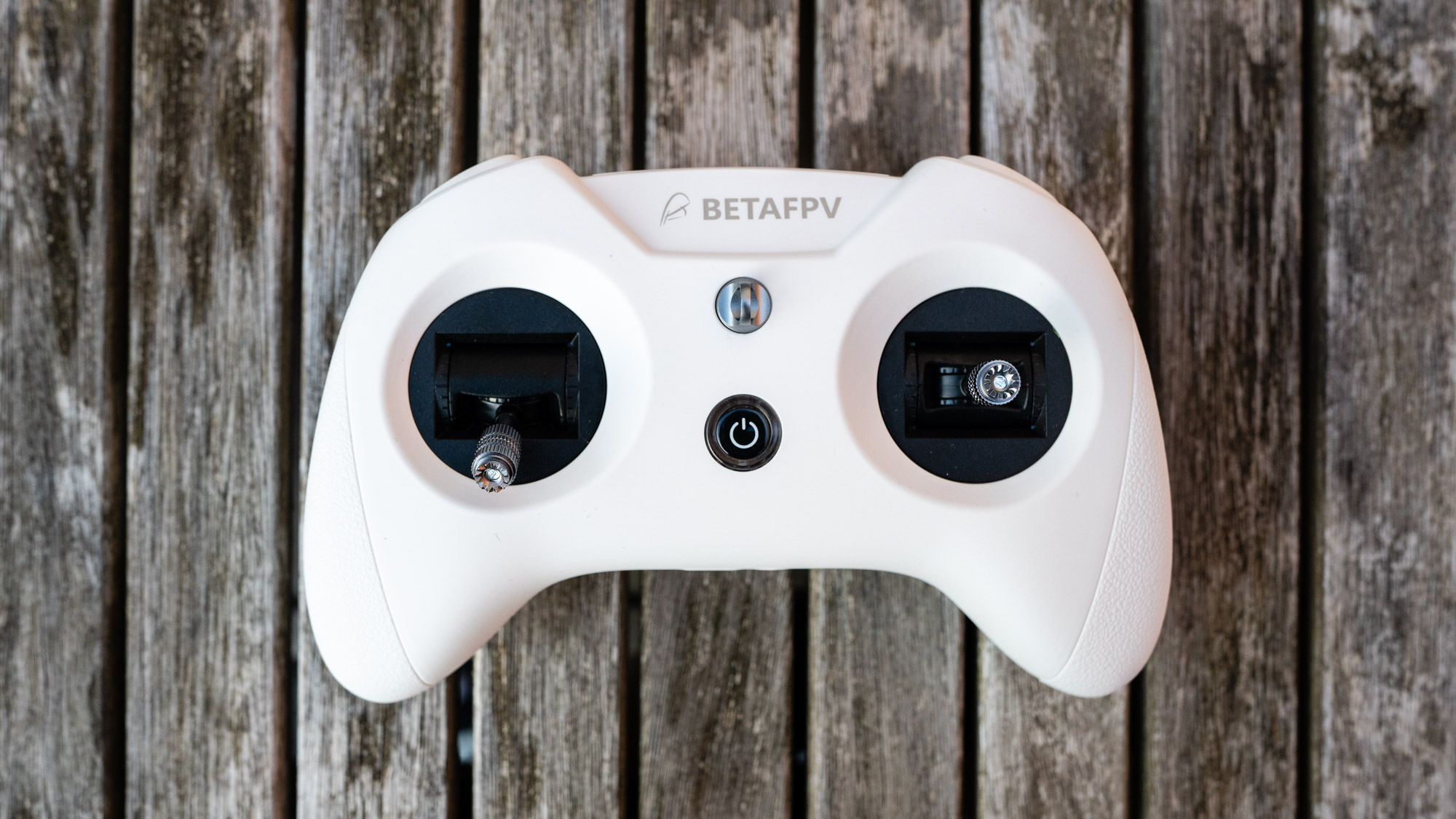
The kit comes with the LiteRadio 3 Transmitter, which is the Frsky D8 version with 100mW transmitting power. This isn’t as versatile as the ELRS version, but if you want to take advantage of the ability for the Cetus X to hover, hold position and emergency land in Normal Mode, this is the transmission protocol that comes with the Cetus FC version of the drone. The controller uses a built-in 2000mAh battery and is comfortable to use with two buttons and two switches on the top, as well as the power button and control sticks on the front. This is BetaFPV’s mid-range controller option.
A useful feature of the controller is that it can be plugged into a computer to control FPV flight simulators including LiftOff, FPV.SkyDive and many more. FPV simulators are a great tool for honing your FPV flight skills, plus, before ever flying an FPV drone for real, it’s well worth getting in at least 15 hours of simulator flights so that you can get used to the controls; this is particularly useful for learning to fly in Manual/Acro Mode.

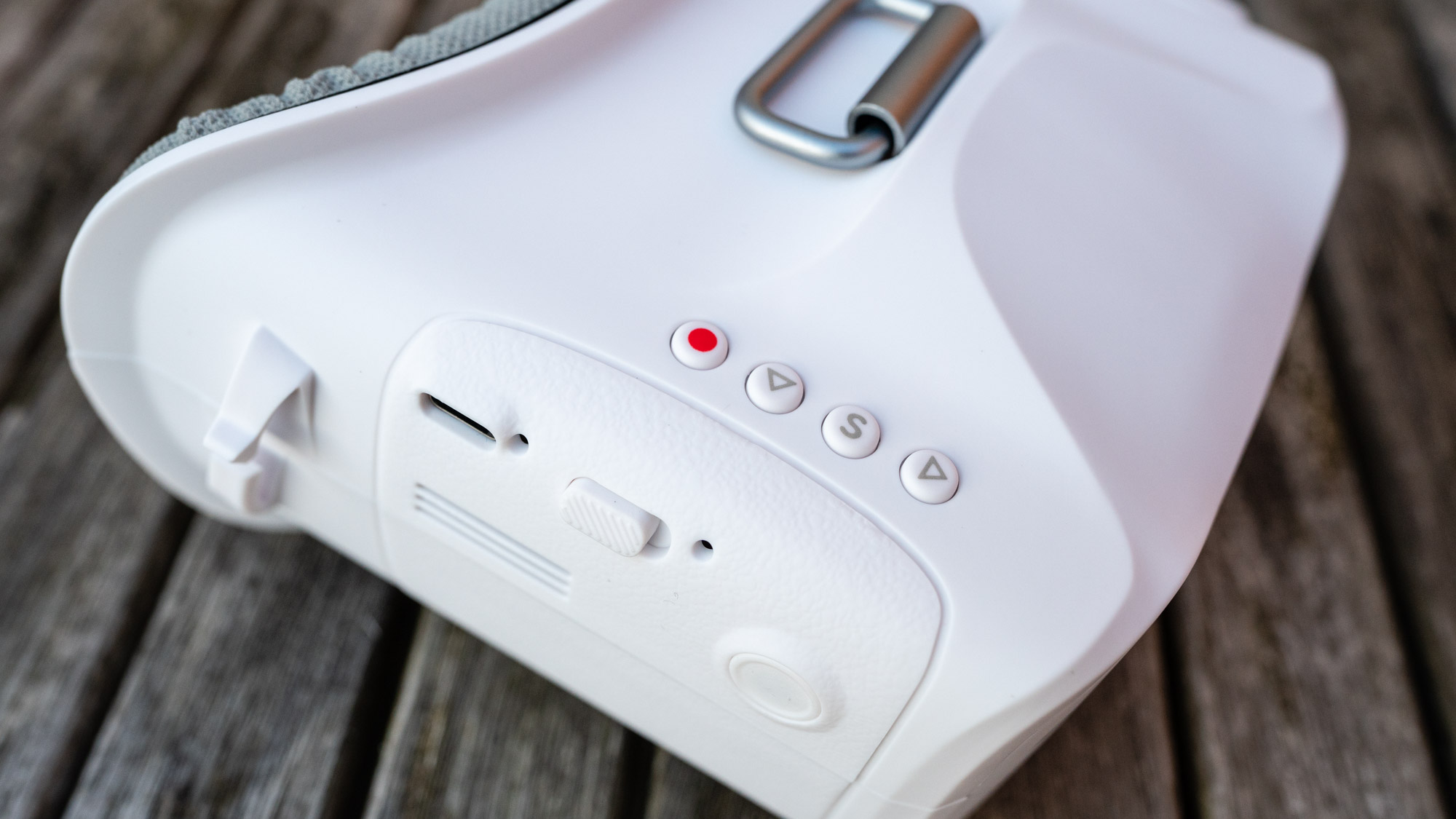
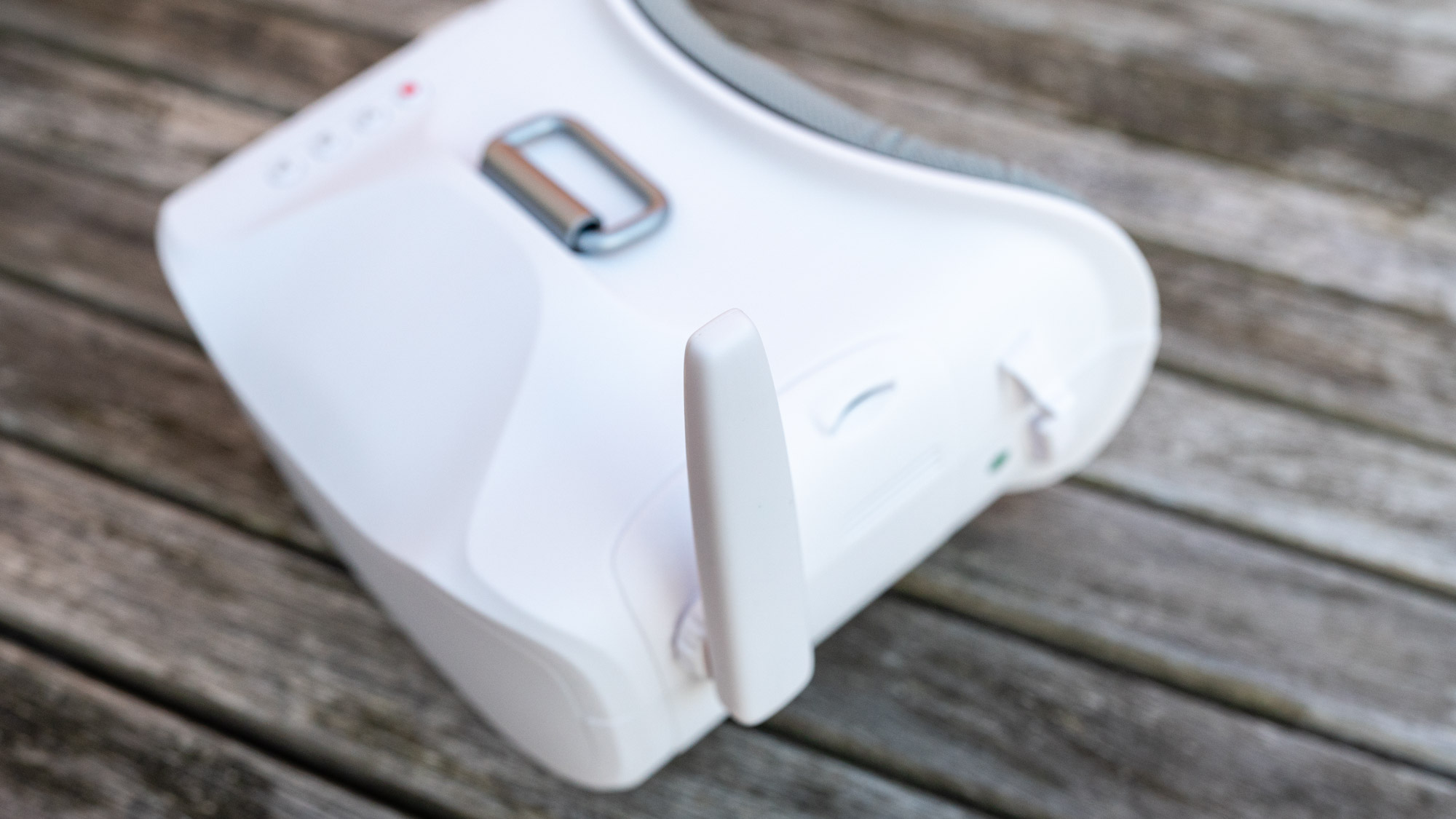

The VR03 FPV Goggles that come in the kit are basic box-type goggles, but they provide improved transmission when compared to the VR02 FPV Goggles that come with the Cetus Pro and Cetus Lite kits. Video transmission can be set to between 25mW and 350mW, but the amount you can legally set depends on local laws so this needs to be checked before increasing from the default of 25mW using the menu within the goggles. The easy-to-follow and comprehensive instruction manual covers this and everything you need to know about the drone.
The FPV video signal is good, but it is prone to interference and image break-up like all analogue systems, although the advertised video transmission range of up to 600m is a little ambitious with the goggles and stock antenna. During testing, the Cetus X was kept within 100m and this was fine for the most part. The video feed is 480p in the VR03 goggles, which is adequate for beginners, plus there’s a built-in DVR where you can record the VGA quality video feed to a microSD card.
BetaFPV Cetus X: Functionality
- Three flight modes and three speed settings.
- Turtle Mode flips the drone after crashes.
- Hover and position hold in Normal Mode.
The Cetus X offers three flight modes and three speed settings that allow you to build up to Manual/Acro Mode at the fast speed setting as your flight skills improve. In reality, using Normal mode is ideal for getting used to wearing FPV goggles for flights because in this mode the Cetus X can hover, hold position and land automatically when the batteries are low. In Normal mode, the drone also stays level and can’t be flipped or rolled.
Beyond this, there’s sport mode which is where the angle of the drone’s roll and pitch are fixed at an angle and the drone can’t be flipped or rolled. It is more nimble than Normal Mode, and the sensors for position hold etc. are switched off, but using it doesn’t help you to learn how to fly in Manual/Acro Mode. You may as well dive into Manual Mode where you have to regulate the throttle to maintain flight and also regulate the pitch and roll control stick (right stick) to avoid crashing and to flip, roll and dive the drone.
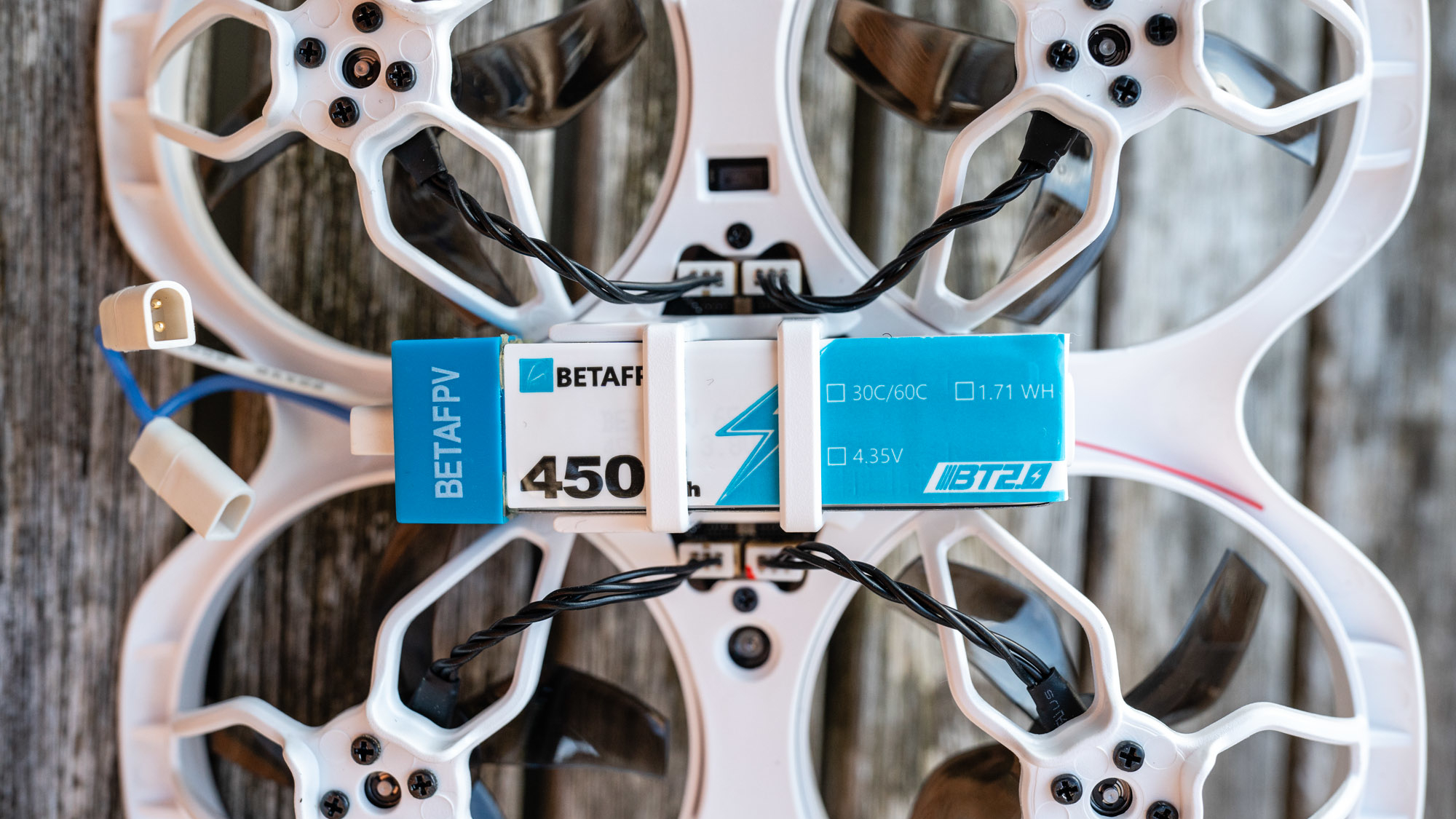


In Manual Mode, the Cetus X is a lot of fun and thanks to using two batteries, it can be flown slowly indoors but also has sufficient power for freestyle flying outdoors. This is where you perform flips, rolls, dives and loops. Flights typically last between 3-5 minutes depending on how aggressively you fly, whether you’re indoors or outdoors and how windy it is. A pair of batteries take about 20 minutes to charge. The Cetus X did struggle at times in a breeze around 15 mph, even in the fast speed setting, but in less breezy conditions, it flew like a hot knife through butter.
As previously mentioned, crashing is frequent whether you’re a beginner or an experienced pilot. For the former, it’s mostly down to learning the controls, while for the latter it's because of taking greater risks by flying fast through, over and around obstacles. When you crash and the drone is upside down, as long as the drone is on a flat relatively surface or short grass, Turtle Mode allows you to flip the drone remotely and take off again, which is a handy time-saving feature.
The balance of cost, power and the flight and speed modes available make the Cetus X a fantastic ready-to-fly FPV kit for beginners and even more experienced pilots looking for something small and fun they can take everywhere. Everything in the kit allows you to get started with ease, but you can upgrade to better analogue goggles and a more advanced controller if you wish.
BetaFPV Cetus X: Price
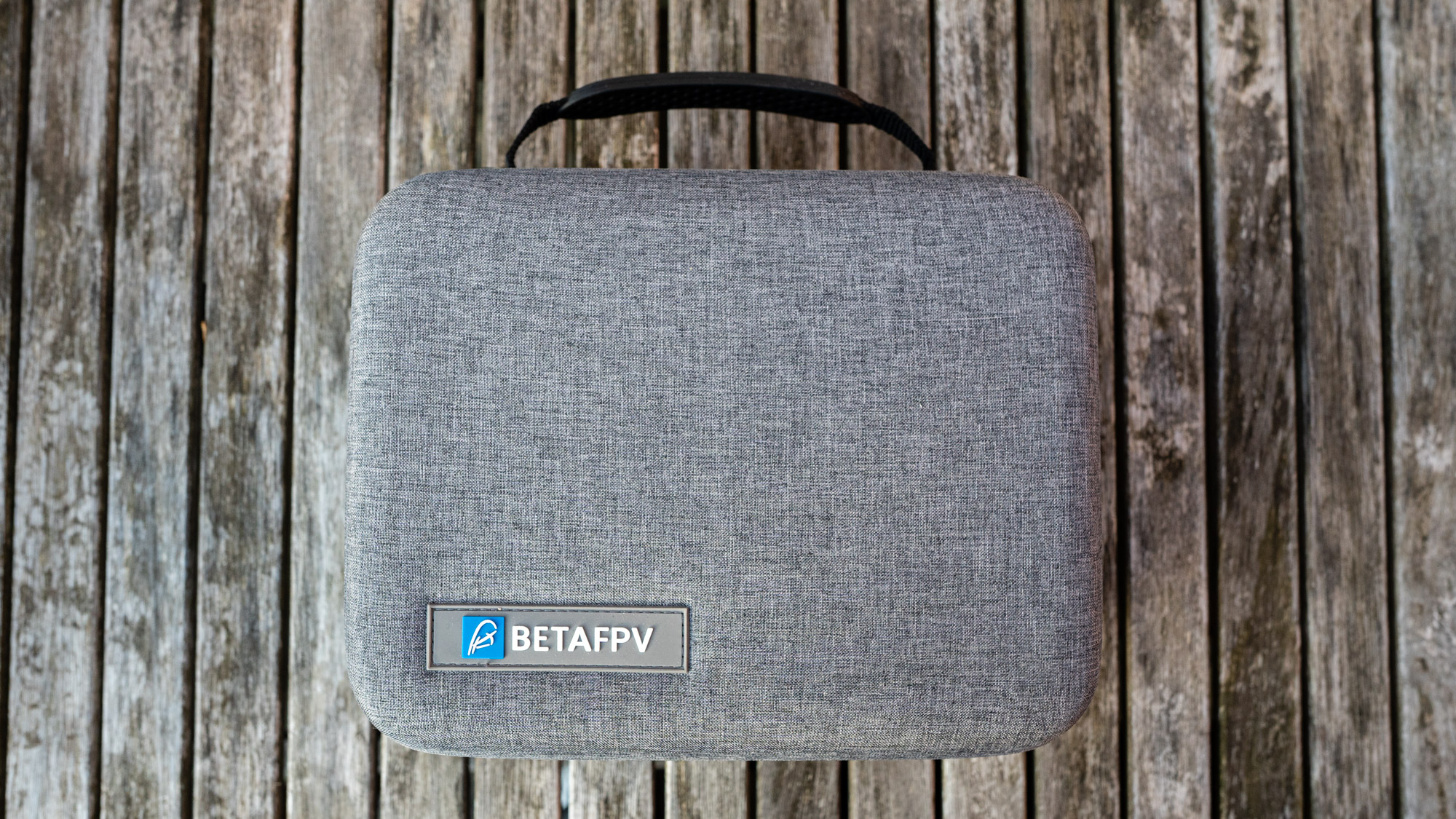
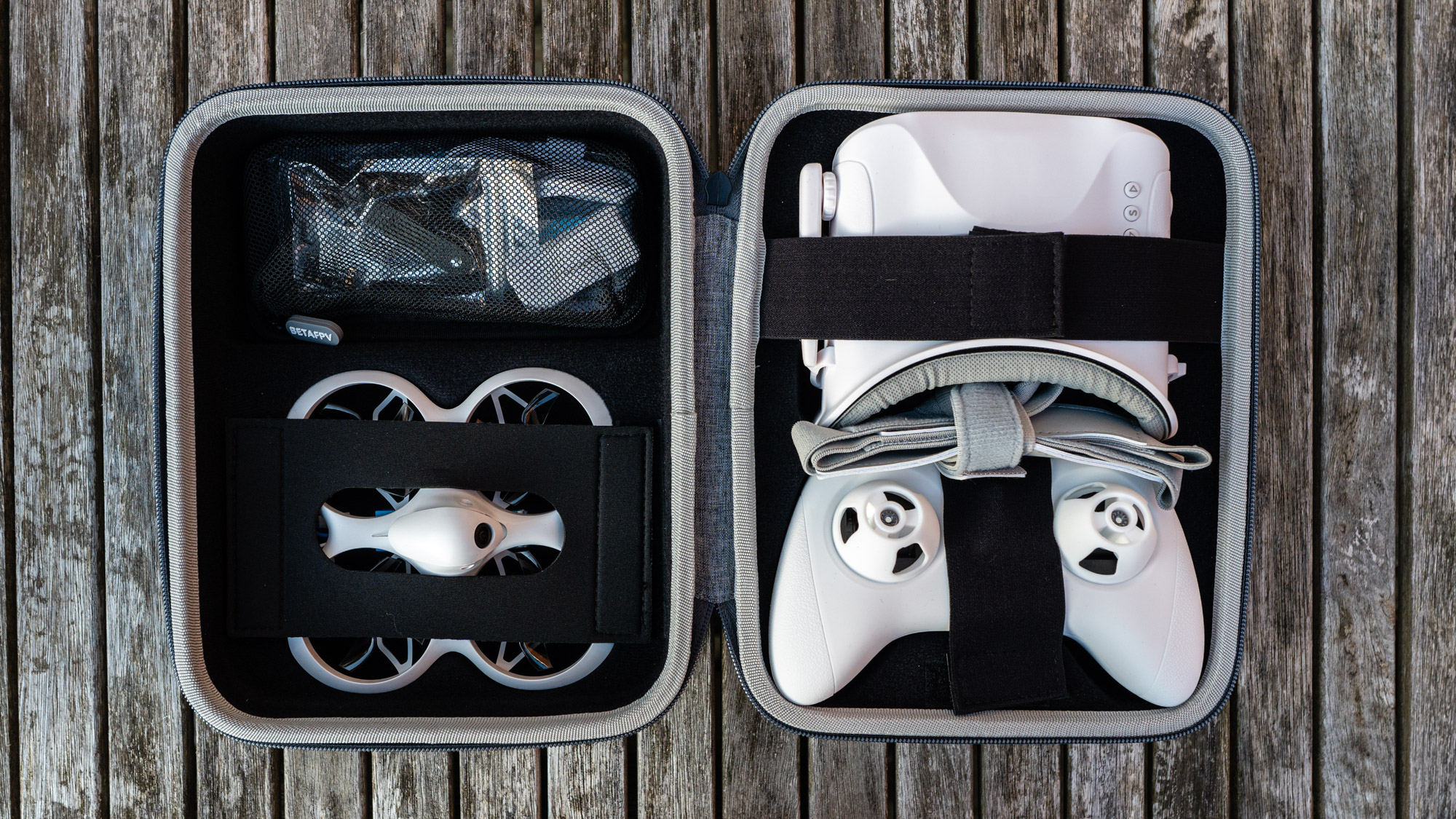
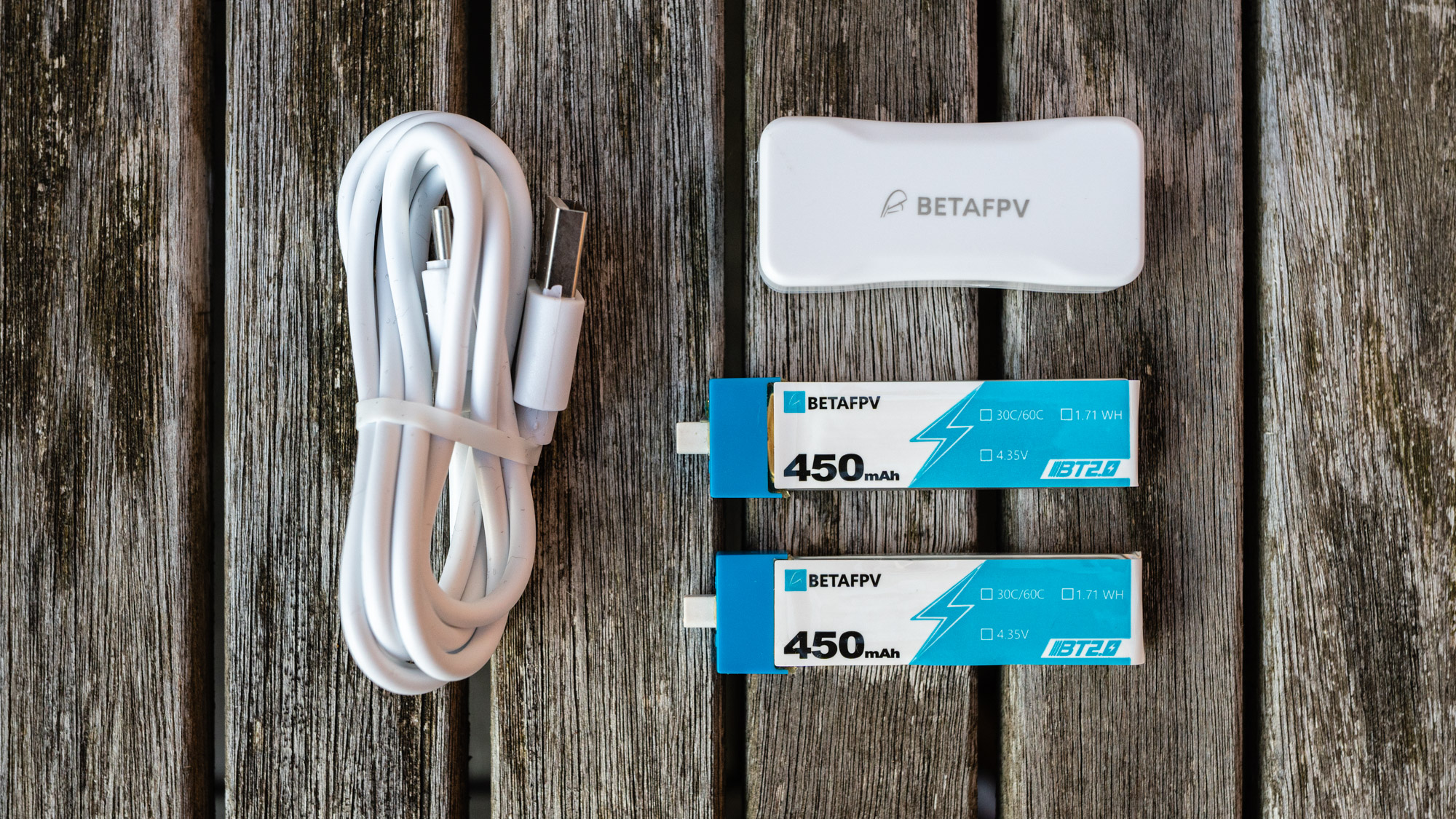

The Cetus X kit comes with everything you need to get started for $310 / £249. This includes the Cetus X Brushless Quadcopter (Cetus FC version), a LiteRadio 3 Transmitter, VR03 FPV Goggles, four batteries, a USB battery charger/battery voltage tester and cable, four spare propellers, a propeller removal tool, a USB-C adaptor for firmware updates and tuning, and a carry case.
With four batteries in the kit offering only two flights of up to 5 minutes each, it’s well worth investing in an additional four batteries for $20 / £16 and a six-port battery charger for the same amount.
Should you buy the BetaFPV Cetus X?
Out of the three BetaFPV Cetus models that are available, the Cetus X offers the most longevity because as well as offering easy-to-fly modes that build up to Manual/Acro mode, the Cetus FC version also offers hovering and position hold in Normal mode. This will not help you build up to flying in Manual/Acro Mode, but it is useful for getting used to using FPV goggles.
Being a beginner’s micro whoop FPV drone, the Cetus X doesn’t capture photos or cinematic video, but you can record the 480p FPV goggle feed using the goggle's built-in DVR. And one of the great things about this drone is that as well as offering three flight modes and three speed settings, it runs on two 1S batteries so there’s plenty of power available for freestyle tricks once you progress to flying in Manual/Acro mode.
If this drone isn't for you
Learning to fly FPV drones in Manual/Acro Mode isn’t for everyone, and once you progress to larger FPV drones the LiPo batteries require much more care than smart batteries used by camera drones. If you’d like to keep everything as simple as possible while enjoying the ability to capture cinematic 4K FPV video, the DJI Avata with the Motion Controller 2 is a great option.
This combination makes FPV flight incredibly easy and intuitive, and the Avata offers many features not available with traditional FPV drones, including smart batteries alongside the ability to brake and hover, which make it suitable for both beginners and experienced FPV pilots alike. Although the latter would typically purchase the DJI FPV Remote Controller 2 separately to be able to fly in Manual/Acro mode.
If you'd rather start with a conventional drone, then our guide to the best beginner drones is the place to look.
James is an award-winning freelance landscape and portrait photographer, as well as a highly experienced photography journalist working with some of the best photography magazines and websites with a worldwide audience. He’s also the author of The Digital Darkroom: The Definitive Guide to Photo Editing. www.jamesaphoto.co.uk
